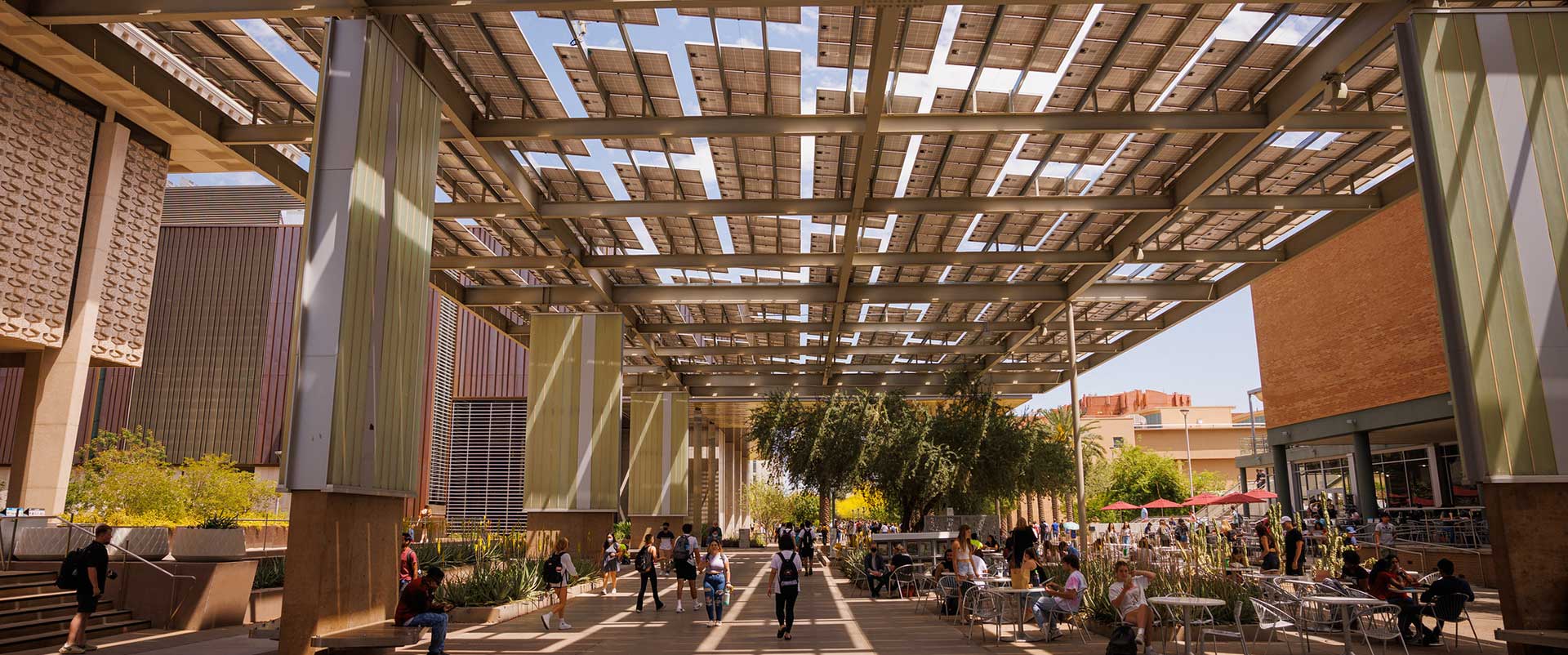
Solar initiative
Arizona State University's solar portfolio is the largest of any university in the U.S., and perhaps the world.
ASU has more than 24-MWdc of photovoltaic (PV), concentrated photovoltaic (CPV) and solar thermal solar systems at 89 locations on all four of its campuses, the ASU Research Park, and off campus at the Red Rock Facility. These include fixed, single-axis and multi-axis tracker systems located on building rooftops, parking structures, surface parking and open land.Twenty-four MWdc capacity equals nearly 50 percent of ASU's present peak daytime load.
The Solar PowerParasol at the MU has transformed the space from a hot pathway to a social center with plentiful seating and an entertainment stage. The shade mitigates an urban heat island. The spaces between the panels are on purpose to mimic the shade of a tree.
ASU's 24.1-MWdc solar generating capacity avoids 23,267 metric tons of carbon dioxide equivalent emissions (MT CO2e) per year, roughly the same as the annual emissions of 4,804 passenger vehicles. The estimated annual production of 42,826 megawatt hours is equivalent to the energy required to power 3,366 homes for one year, or 7.5 percent of ASU's 2012 Grean House Gas (GHG) inventory.
Visit the ASU solar website at asusolar.asu.edu for current information about the university's Solarization Initiative.
There are many reasons ASU is the perfect place for solar energy. Below are five top reasons why ASU has undertaken a massive program to power its campuses with renewable energy:
- ASU is a founding signatory of the American College and University Presidents' Climate Commitment, which requires immediate steps to reduce greenhouse gas emissions.
- Numerous solar PV systems across ASU campuses prominently display the university's commitment to renewable energy and carbon neutrality.
- Renewable energy systems provide points toward LEED certification and ASU requires all new buildings to be at least LEED silver certified.
- Arizona Public Service, one of ASU's energy service providers, predicts electricity rates will continue to rise over the next several years primarily due to volatility of fossil fuel prices.
- It's the right thing to do.
Read more:
ASU LightWorks